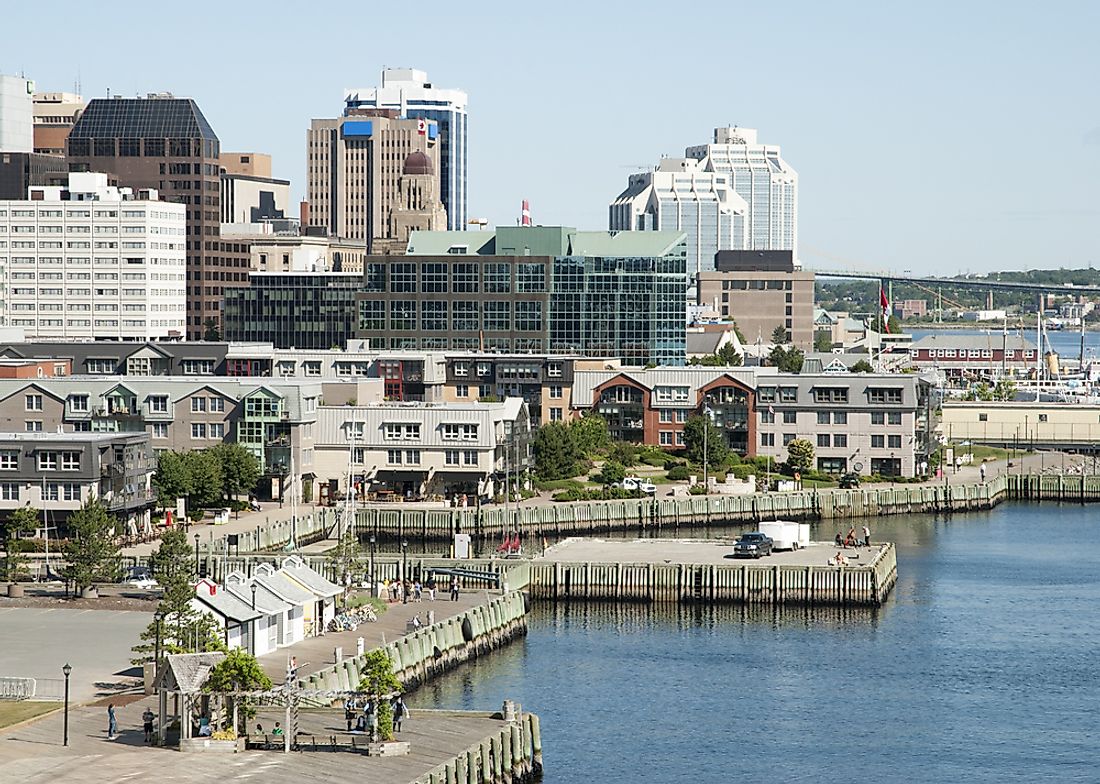What Is the Capital of Nova Scotia?

Nova Scotia, a Latin word for New Scotland, is one of the Maritime Provinces of Canada and one of the four Canadian provinces forming the Atlantic Canada. It is Canada’s second-smallest province, covering an area of about 21,300 square miles. Nova Scotia also includes the Cape Breton and 3,800 coastal islands. The province is the second-most densely populated in Canada with a population of 923,600 people. Nova Scotia is a resource-based economy and has only diversified in the recent economy. It is home to about 40% of the country’s military asset. The provincial and administrative capital of Nova Scotia is Halifax.
Overview of Halifax
Halifax is officially known as the Halifax Regional Municipality. It comprises of four former municipalities that were amalgamated in 1996, including Halifax, Dartmouth, Bedford, and Halifax County. Halifax is an economic center in Atlantic Canada, hosting several government services and private sector firms. The city was ranked among the best five places to live in Canada by the Money Sense Magazine. It has also been consistently placed on the list of top ten business friendliness of both North and South American cities. The urban areas surrounding the Halifax Harbor is often referred to as the Metropolitan Halifax. It is the most populous area on the Atlantic coast of Canada, accounting for over 40% of the population of Nova Scotia.
Geography
Unlike the majority of municipalities with relatively larger metropolitan area, the suburbs of Halifax is considered part of the central municipality. The Halifax Regional Municipality covers an area of approximately 2,353 square miles or 10% or the total area of Nova Scotia. The coastline is approximately 250 miles long and is heavily dented. The coast is mainly rocky with some isolated beaches in the sheltered bay. Halifax experiences humid continental climate, characterized by warm summer and mild winter due to the Gulf Stream moderation. Temperature ranges from -8.00C to 240C with January and August being the coldest and warmer months respectively. The average precipitation is highest between November and February.
Economy
The metropolitan area of Halifax is a major economic center in Canada, with several government services and privately owned businesses. Halifax is the business, banking, and cultural center for the Maritime Region. Trade is considered the municipality’s main employment sector, creating over 36,000 jobs. Health care, education, and public administration are also major employment sectors. Halifax has a growing concentration of manufacturing industries and is developing into a transportation hub through the growth at the port. Some of the resource industries found in the municipality include agriculture, fishing, mining, forestry, and natural gas. Other major industries in the municipality include natural gas fields and other mineral extraction in rural areas.
Administration
The municipality of Halifax is governed by a mayor who is elected by the residents of the municipality and 16-person council. The councilors are elected from the geographic districts for a four-year term. The regional council is responsible for the management of the municipal government. The Halifax Regional Municipality Charter is responsible for provincial legislation and provides oversight to the municipality. The local matters in the municipality are handled by the three community councils each made up of at most six regional councilors.







